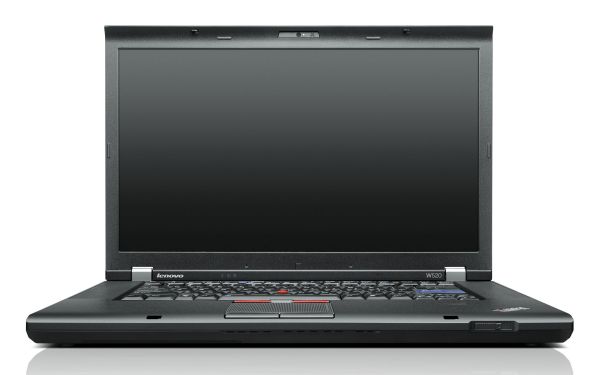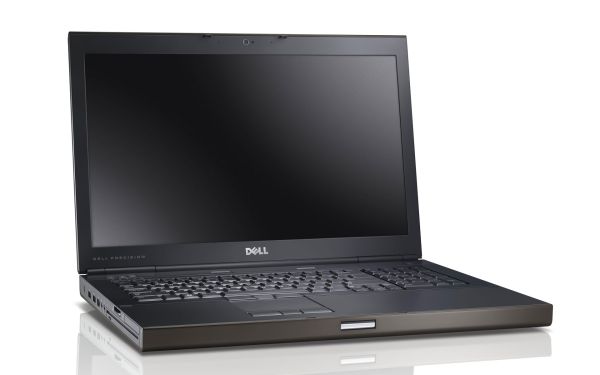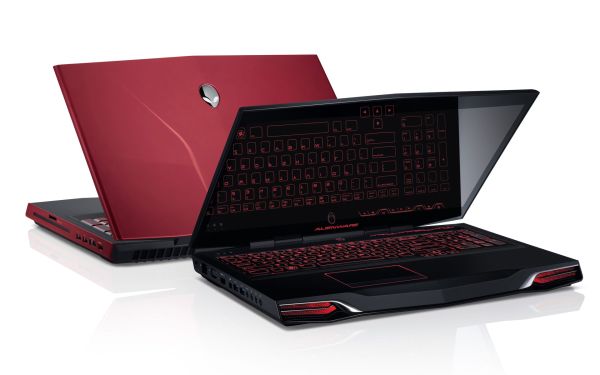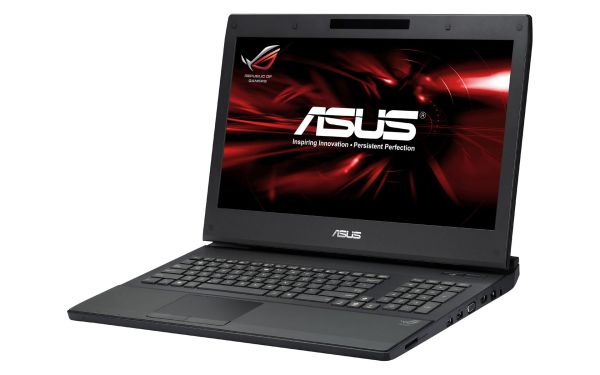Holiday 2011 Laptop Buyer’s Guide
by Jarred Walton on December 2, 2011 3:45 AM ESTGoing for Broke: High-End Laptops and Notebooks
Once we shift pricing to around $2000 and up, we again get a lot of options. There are three primary reasons to go with a high-end (read: expensive) laptop: there’s the no compromise Jack-of-Trades approach, mobile workstations, and no-holds-barred mobile gaming. We’ll take those in turn, though there’s certainly some overlap with the first two.
No Compromises High-End Laptop
A month or so back, one of our readers emailed me asking for advice on what laptop to get. He really wanted it all: battery life, build quality, an excellent display, and even the ability to play games. It’s fine to want it all, but you definitely have to be willing to pay for it. With the display being a major concern—he was very disappointed with most of the laptop displays out there—it narrowed things down a lot. I tossed out the XPS 15 and 15z as possibilities, though their GPUs are a bit underpowered for 1080p gaming. The Alienware M14x also came up, but he felt it was a bit too gaudy. With the Clevo W150HRQ sporting one of the best matte 1080p displays around, we also toyed with that but ultimately ruled it out because of the plastic construction. What was left was a laptop that also fits the next category: mobile workstation (albeit on the lower end of the workstation spectrum).
Built to last, equipped to do (nearly) everything: Lenovo ThinkPad W520 for under $1900
Lenovo’s ThinkPad line has always had a good reputation for build quality, though you’ll generally want to stick with the T-series and W-series to ensure you get the best of what ThinkPad has to offer. The W520 sports the same LCD panel as the Clevo W150HRQ (matte, 95% NTSC color gamut, and about as good as you can get with a TN panel), and it offers up plenty of other upgrades. The base model starts at $1000 and comes with a dual-core CPU, 4GB RAM, 320GB HDD, a Quadro NVS 4200M, and a 1366x768 display—that’s definitely not what we’re after. Grab a bunch of upgrades and you end up with something like this model for $1850.
Lenovo appears to be running some killer sales right now, though, which means you can get additional performance and features and still stay under $2000. We went with the Core i7-2760QM processor, 2x4GB RAM (with two open SO-DIMM slots if you want to upgrade to 16GB), a Quadro 2000M GPU, the 1080p high gamut display, and a built-in colorimeter and with the “TPHOLIDAY” coupon the total still came to under $1900. What’s more, you still get NVIDIA’s Optimus Technology and the large 9-cell battery means you can get upwards of eight hours. The Quadro 2000M is also interesting in that it has the same 192 CUDA cores as the GTX 560M, though at a lower clock and with a 128-bit memory interface; still, it’s enough to handle most games at medium to high detail and 1080p—and if you want to do “real” work, it can handle that as well. It would be great if we could get the W520 with a consumer GPU to save some additional cost, but unfortunately that's not something Lenovo supports; given their focus on business first, it's not too surprising.
Mobile Workstation, Take Two
Okay, the Lenovo ThinkPad W520 certainly qualifies as a mobile workstation, but what if you’re serious about the workstation aspect? Maybe you run some complex CAD/CAM or other scientific software that can benefit from even more GPU performance. In that case, you’re probably looking at Quadro 3000M or higher GPUs, and probably just go for broke with the Quadro 5010M. Sporting a full 384 CUDA cores and a 256-bit memory interface, the Quadro 5010M is the fastest mobile Quadro solution right now. Also, it doesn’t come cheap—not even remotely so. If you want the Quadro 5010M, there are three ways to get there: Dell’s Precision M6600, HP’s EliteBook 8760w, or a Clevo X7200. We’ll just skip the last one, because as potent as the system might be, it’s equally huge and build quality isn’t what we’d want from a $4000+ notebook. So between the Dell M6600 and HP 8760w, which one comes out on top?
For serious work (and serious money): Dell’s Precision M6600 for $4400
We’ve reviewed the HP 8670w, and we’ve tested an earlier version of the M6600 with the Precision M6500; both are clearly targeted at mobile workstation professionals and both have all the support you’d expect for such users. If you’re in the market for such a notebook, there’s a good chance your company is going to decide which one is “best” (because they already have a contract with Dell or HP), but if you have a choice—or if you’re paying out of your own pocket—the Dell Precision M6600 gets the nod for offering basically the same features and performance at a lower price. At the time of writing, you can get the M6600 with an i7-2720QM, 2x4GB RAM, 750GB HDD (or go with a 256GB SSD for $410 more), Quadro 5010M, and a 1080p IPS PremierColor panel for only $4400. Yowza. That includes a $827 instant rebate that Dell is currently running, though, without which the pricing would be a wash. (HP’s 8670w with similar specs currently checks in at $5193.)
Gaming on the Go
Best current gaming laptop: Alienware M17x R3 for $2690
For the mobile gamers who are really serious about gaming, you’ll want the fastest mobile GPU you can find. Sure, you could even go crazy with an SLI or CrossFire notebook, but we’d rather dial it back a bit and remain somewhat sensible. We gave the Alienware M17x R3 a bronze when we reviewed it back in June, and it remains one of the swankiest gaming notebooks around. The starting price of $1500 will get you a quad-core i7-2670QM, 8GB RAM, an HD 6870M, 500GB HDD, and a 900p display. That's actually pretty compelling, and you get switchable graphics (manual Alienware switching with AMD GPUs or NVIDIA Optimus with the green team), so you don't sacrifice battery life—the M17x R3 really does have it all!
Since we're looking at the high-end, though, we'll take the $1900 configuration and upgrade to the GTX 580M for $375 extra, and Alienware also has a $375 upgrade available that will give you a 256GB SSD for your OS and apps with a 750GB 7200RPM HDD for mass storage—just the way we like it. (If you’d rather stick with AMD GPUs, the HD 6990M is $75 less than the GTX 580M.) While we’re upgrading the graphics and other areas, go ahead and throw in the Killer Wireless-N 1103 for $40; it’s a healthy upgrade from Intel’s 2x1 MIMO Wireless-N 1000 and our experience with the 1102 shows that it actually can improve your wireless networking (and gaming) experience.
Good gaming for under two grand: ASUS G74SX for $1939
If spending $2500 or more seems a bit more for a gaming laptop, you can stick with the base setup of the M17x R3, or you might prefer ASUS’ G74SX as an alternative. Like the M17x R3, we gave it a bronze award for offering a nicely balanced gaming notebook, and we did like the fact that ASUS offers an SSD + HDD setup with the G74SX-DH72. The GTX 560M isn’t quite as snappy as the GTX 580M, but it’s enough to run most games (including Skyrim, Battlefield 3, and Batman: Arkham City) at high quality settings and 1080p. We’ll be updating our mobile gaming benchmark suite shortly and will include the G74SX results as a reference point.














88 Comments
View All Comments
s44 - Friday, December 2, 2011 - link
Primebanvetor - Friday, December 2, 2011 - link
Hi Jarred,Thanks for the great guide, but I kept wondering if this plain price/category division is the best way to go...
For instance, the only laptop that you mentioned that even fits my buying needs is the Asus Ultrabook, but I feel that there are other options in the market that were not addressed (HP's Envy, for instance).
Maybe you could keep the price categorization (up to 400, up to 700, up to 1200, up to infinity?), but add a little more depth inside each category, specially perhaps on the 1200, where there are a lot of things to choose from... The sub-categories could be screen size based, or, even better, weight based...
I, for instance, need something powerful yet as portable as possible. Currently I have a Dell Latitude E6400, which is very nice, but is starting to show its age. I've been looking for something else at the 14" category, but both the new Envy and the 14z let me down on the screen category... My E6400 has a very nice LED backlit 1440×900 screen, I cannot think about downgrading to a 1366 x 768 screen!
piroroadkill - Friday, December 2, 2011 - link
Haha, I hear you on the screen thing. My laptop is a positively ancient Dell Latitude D800. But it has a 15.4" 1920x1200 screen.It might be old, but the battery life is great. I have a bay battery as well as the main battery. I also upgraded it to the fastest 2GHz Pentium M I could get, 2GB RAM, Windows 7 and threw in a 160GB HDD. I also upgraded the GPU to the Radeon 9600 Mobility Pro Turbo.
Yes, all this stuff is old, we're talking 2005~ish I suppose. But I don't really game on it, and I can't imagine buying a piece of crap 1366x768 screen when I have this beautiful panel..
The0ne - Saturday, December 3, 2011 - link
Yea, those days will not come again. I dislike having lower resolution in the same size screen. Heck even my Dell vostro 17" from 3 years ago is 1920x1200 and the screen was nice, for a TN panel.And while the M17xR3 is nice for a new laptop I will continue to hold on to my R2 simply because of the better screen and its size. If anything I can always upgrade the cpu and video card but I'm not of a modern gamer so I'm not worry.
cjarrett - Monday, December 5, 2011 - link
Check out the Sony SA. Its got a great 1080 screen, and can play relatively recent games--though no Alienware.It's also really light. Its treated me well thus far.
rdamiani - Sunday, December 11, 2011 - link
1080p screens are the problem, not the solution. A 1080p screen is essentially an ultra-wide SXGA screen - something that was new and hot in 1998. 12 years later I was hoping to see 200+ dpi displays, not the 100dpi that is so distressingly common.dj christian - Wednesday, January 4, 2012 - link
Where can i see dpi values on screens? And which ones are SXGA which ones are not?Drewdog343 - Sunday, January 22, 2012 - link
http://en.wikipedia.org/wiki/List_of_displays_by_p...piroroadkill - Friday, December 2, 2011 - link
A 14" budget gaming Llano notebook.That sounds like a great idea.
Some mythical specs, a 14.1" 1440x900 16:10 panel, A8-3530MX. Give me 6GB DDR3-1600 because Llano will be carving into system RAM, and give me a 7200 RPM 500GB HDD. Give me a spare mSATA slot inside, so later on I can buy a little SSD on a card and toss it in.
Cheap the price down, and I'd buy it. A decent quality TN (hah, is that possible?) is acceptable of course, because it'll keep the thing in the right price range.
piroroadkill - Friday, December 2, 2011 - link
An option to upgrade that to, say, 1680x1050 and IPS would also be welcome.Matte, all options, of course.